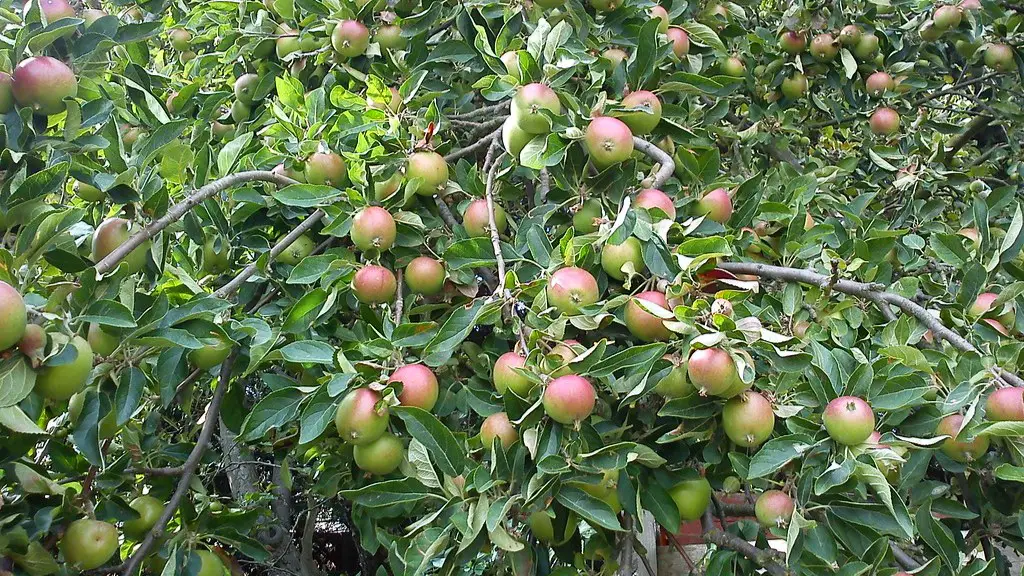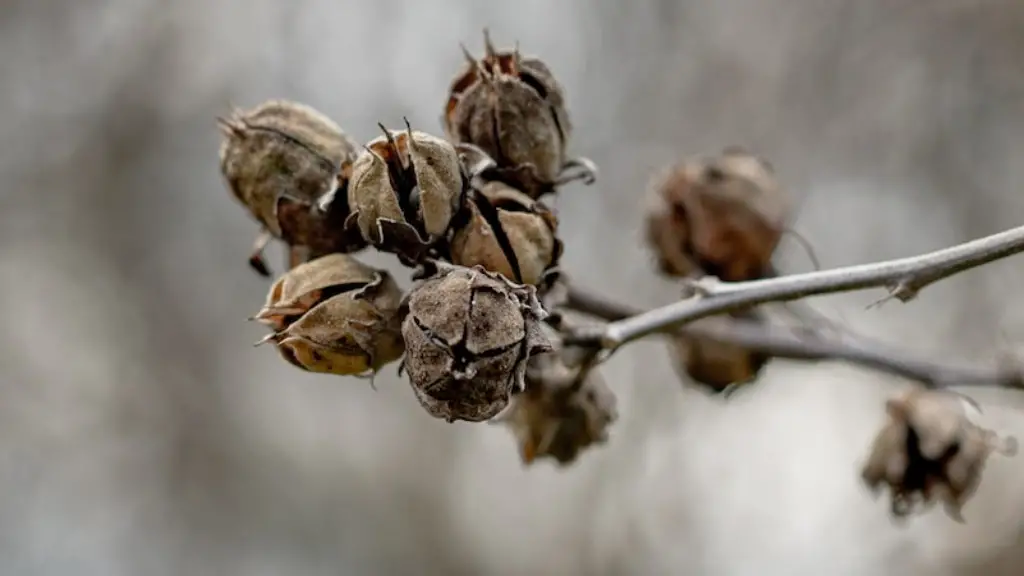What are Palm Tree Seeds Called?
Palm tree seeds, also known as palm nuts, are a fascinating and unique type of seed with a wide range of uses. Palm tree nuts come from different species of palm tree, which are typically found in tropical or subtropical climates. They are characterized by their distinctive shape, size, color, and texture and are used for a variety of purposes, including as ingredients in culinary dishes, decorations for home decorating, and even as a basis for cosmetics and fragrances. Palm tree seeds are also used for many medicinal purposes.
Palm tree nuts are generally the size of a large marble and can range in color from brown or yellow to red or black. The texture of the seed can range from smooth to ridged and spongy, depending on the species of palm tree. Palm tree nuts contain high levels of protein, fat, carbohydrates, and vitamins and minerals, as well as many antioxidants, which is why they can be used for various medicinal purposes. Additionally, certain palm tree nut extracts are used in the production of cosmetic products, including moisturizers, cleansers, and even perfumes.
In addition to its medicinal and cosmetic uses, palm tree nuts can also be eaten and contain in their core, a treasured delicacy known as palm fruit or palm nut. The nut is highly valued in many cultures around the world for its sweet flavor and nutritional value. It is enjoyed in many dishes, including desserts, salads, and sauces, and can also be used to make a paste that can act as an ingredient in some dishes. The nuts can also be ground into flour and added to soups, sauces, and other dishes.
The uses of palm tree nuts are not limited to the culinary experience. In parts of Africa, the Middle East, and some parts of India, palm tree nut butter is traditionally used for medicinal purposes. The nut butter is believed to contain anti-inflammatory properties, as well as positive effects on cardiovascular health and respiratory function. Additionally, in many cultures, palm tree nuts are traditionally thought to have aphrodisiac qualities and are mixed into drinks or consumed as part of a ritual.
In some parts of the world, palm tree nuts are also put to economic use. They can be used to produce palm oil, an ingredient commonly used in a variety of products, including cosmetic creams, soaps, and cooking oils. Additionally, some species of palm tree nuts are used to produce palm sugar, an alternative sweetener to cane sugar.
Overall, palm tree nuts are a diverse, multi-purpose seed with a fascinating history and a variety of uses. Whether consumed as a nutritious palm fruit, as part of a ritual, or used in the production of cosmetics or a cooking oil, this seed is an integral part of many cultures and cuisines.
Origin of Palm Tree Nuts
Palm tree nuts are believed to have originated in India, although the exact origin is difficult to trace. From India, the cultivation of palm tree nuts spread to the Middle East and parts of Africa, and eventually made its way to other parts of the world, such as the Caribbean and South America. It is also believed that palm tree nuts were introduced to Europe through ancient trading routes.
In addition to its wide distribution, palm tree nuts have a long history of use in many cultures around the world. In Ancient Egypt, the nuts were used in rituals and ceremonies, while in the Middle East, they have been used for medicinal purposes for centuries. In more modern times, palm tree nuts are used in cosmetology and cooking, as well as for economic purposes, such as to produce oil, butter, and sugar.
Today, the cultivation of palm tree nuts is mostly concentrated to tropical or subtropical climates around the world. India, Brazil, and parts of Africa are the largest producers of palm tree nuts, followed by Australia and parts of the Middle East. Additionally, palm tree nuts are cultivated in the Caribbean, for instance, in the Dominican Republic, as well as some parts of the United States.
Benefits of Eating Palm Tree Nuts
Aside from its many culinary uses, consuming palm tree nuts can bring a wide range of health benefits. The nuts are rich in nutrients, including protein, fat, carbohydrates, and vitamins and minerals. Additionally, palm tree nuts contain high levels of antioxidants, which can help protect the body against damage caused by free radicals.
The high protein content in palm tree nuts can also help to boost metabolism and build lean muscle mass. Plus, the healthy fats found in the nut can help to regulate blood sugar levels and reduce the risk of developing type 2 diabetes. Vitamins and minerals, such as iron and zinc, can help strengthen the immune system, while the high fiber content can help improve digestive health and reduce the risk of constipation and other gastrointestinal issues.
Palm tree nuts may also offer some additional benefits. Studies have found that regular consumption of the nut can reduce inflammation and the risk of developing certain types of cancer. Additionally, the nut butter has been found to have strong anti-aging properties, which can help improve skin health and reduce the signs of aging.}
Precaution Before Eating Palm Tree Nuts
Although consuming palm tree nuts can bring many health benefits, there are still some precautions that need to be taken. The nuts should be consumed in moderation, as they contain high levels of fat and calories. Additionally, if the nuts are not properly prepared, they can contain toxins, which can be dangerous if consumed in large quantities.
In addition, it is important to note that the nut is not suitable for everyone. Those who suffer from allergies may experience some adverse reactions when consuming palm tree nuts or products that contain palm tree nuts.
Also, it is important to note that the nut butter produced from palm tree nuts is not suitable for vegetarians, as it contains animal products. As such, vegetarians should avoid consuming palm tree nut butter or products that contain the nut butter.
How to Choose and Store Palm Tree Nuts
When buying palm tree nuts, it is important to ensure that they are fresh and of good quality. The nuts should be free from any blemishes or discoloration, and should have a pleasant aroma. Additionally, they should be able to hold their shape when squeezed.
Palm tree nuts should be stored in an airtight container in a cool, dry place, such as a pantry or cupboard. The nuts can also be stored in the refrigerator, but should be consumed within a few weeks of purchase. Additionally, the nut butter produced from palm tree nuts should also be stored in a cool, dry place. The butter can also be stored in the refrigerator and should be consumed within a few weeks.
Uses of Palm Tree Nuts
Palm tree nuts can be used for a wide range of uses, from culinary to medicinal. As previously mentioned, the nut can be consumed as a delicacy, as part of a ritual, or as an ingredient in recipes such as desserts, salads, and sauces. Meanwhile, palm tree nut butter can be used for medicinal purposes and contains anti-inflammatory properties, as well as positive effects on cardiovascular health and respiratory function.
On the other hand, palm tree nuts can also be used for economic purposes. The nut can be used to produce both palm oil, which can be used in cooking, cosmetics, and soap production, and palm sugar, an alternative sweetener to cane sugar. Additionally, the nuts can be processed into palm fuel, which can be used to generate power in some parts of the world.
Finally, palm tree nuts can also be used as decorations and designs for home decorating. The distinctive shape, size, and texture of the nut can bring a unique and eye-catching look to any room. Additionally, the nut can be used for cosmetic purposes, and some species of palm tree nuts are used to produce perfumes.
Conclusion
Palm tree nuts, also known as palm nuts, are fascinating, multi-purpose seeds with a wide range of uses. From culinary and medicinal to economic and decorative, the nut is an integral part of many cultures and cuisines around the world. Additionally, consuming the nut can bring a range of health benefits and can even reduce the risk of developing certain types of cancer. Although the nut should be consumed in moderation, as it contains high levels of fat and calories, it is nevertheless a nutritious and delicious treat.




